
On this day in 1923, the U.S. Patent Office grants Patent No. 1,475,074 to 46-year-old inventor and newspaperman Garrett Morgan for his three-position traffic signal. Though Morgan's was not the first traffic signal (that one had been installed in London in 1868), it was an important innovation nonetheless: By having a third position besides just "Stop" and "Go," it regulated crossing vehicles more safely than earlier signals had.

Morgan, the child of two former slaves, was born in Kentucky in 1877. When he was just 14 years old, he moved north to Ohio to look for a job. First he worked as a handyman in Cincinnati; next he moved to Cleveland, where he worked as a sewing-machine repairman. In 1907, he opened his own repair shop, and in 1909 he added a garment shop to his operation. The business was an enormous success, and by 1920 Morgan had made enough money to start a newspaper, the Cleveland Call, which became one of the most important black newspapers in the nation.
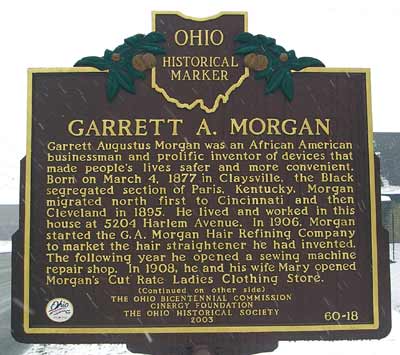
Morgan was prosperous enough to have a car at a time when the streets were crowded with all manner of vehicles: Bicycles, horse-drawn delivery wagons, streetcars and pedestrians all shared downtown Cleveland's narrow streets and clogged its intersections. There were manually operated traffic signals where major streets crossed one another, but they were not all that effective: Because they switched back and forth between Stop and Go with no interval in between, drivers had no time to react when the command changed. This led to many collisions between vehicles that both had the right of way when they entered the intersection. As the story goes, when Morgan witnessed an especially spectacular accident at an ostensibly regulated corner, he had an idea: If he designed an automated signal with an interim "warning" position—the ancestor of today's yellow light—drivers would have time to clear the intersection before crossing traffic entered it.

The signal Morgan patented was a T-shaped pole with three settings. At night, when traffic was light, it could be set at half-mast (like a blinking yellow light today), warning drivers to proceed carefully through the intersection. He sold the rights to his invention to General Electric for $40,000.
More about Garrett Morgan From Wikipedia, the free encyclopedia:
Early life
Born in Paris, Kentucky, Morgan moved at the age of fifteen to Cincinnati, Ohio in search of employment. Most of his teenage years were spent working as a handyman for a wealthy Cincinnati landowner. Like many African Americans of his day, he had to quit school at a young age in order to work. However, the teen-aged Morgan was able to hire his own tutor and continued his studies while living in Cincinnati. In 1895, he moved to Cleveland, Ohio, where he worked repairing sewing machines for a clothing manufacturer. In 1916 he helped to found the Cleveland Call newspaper, and subsequently participated in a 1928 merger that created the Call and Post newspaper.[2] He married his first wife, Madge Nelson, in 1896, but that marriage ended in divorce. Word of his skill at fixing things and experimenting spread quickly throughout Cleveland, opening up various opportunities for him.
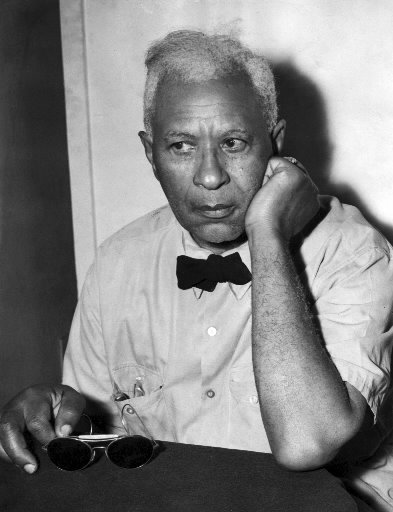
In 1907, Morgan opened his own sewing machine and shoe repair shop. It was the first of several businesses he would own. In 1908, Morgan helped found the Cleveland Association of Colored Men. That same year, he married his second wife, Mary Anne Hassek, and together they had three sons. In 1909, he expanded his business to include a tailoring shop. The company made coats, suits, dresses, and other clothing. Morgan experimented with a liquid that gave sewing machine needles a high polish and prevented the needle from scorching fabric as it sewed. Accidentally, Morgan discovered that this liquid not only straightened fabric but also hair. He made the liquid into a cream and began the G. A. Morgan Hair Refining Company. He also made a black hair oil dye and a curved-tooth iron comb in 1910, to straighten hair.

Safety hood

Garrett Morgan patented a safety hood and smoke protector after seeing firefighters struggling from the smoke they encountered in the line of duty[3] and hearing about the Triangle Shirtwaist Factory fire.[citation needed]

His device used a wet sponge to filter out smoke and cool the air.[4] He was able to sell his invention around the country, sometimes using the tactic of having a hired white actor take credit rather than revealing himself as its inventor.[3] For demonstrations of the device, he sometimes adopted the disguise of "Big Chief Mason", a purported full-blooded Indian from the Walpole Island Indian Reservation in Canada.[5] His invention became known nationally when he and three other men used it to save several men after a 1916 tunnel explosion under Lake Erie.[6] Cleveland's newspapers and city officials initially ignored Morgan's personal acts of heroism as the first to rush into the tunnel for the rescue, and it took years for the city to recognize his contributions.[3] Eventually, Morgan was awarded a gold Medal of Bravery by prominent citizens of Cleveland and a gold medal for bravery from the International Association of Fire Chiefs.[6]
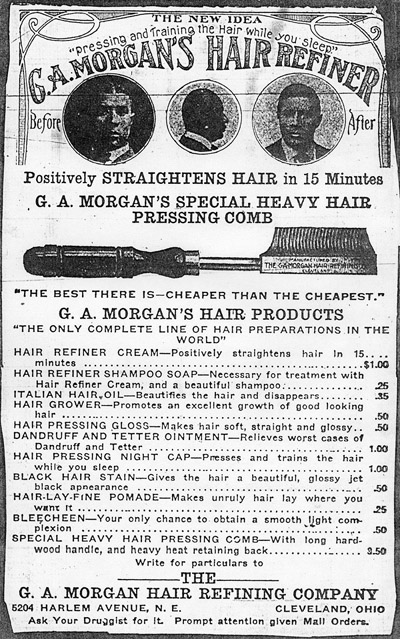
Morgan's invention of the safety hood was featured on the television show Inventions that Shook the World.[7]

Awards and recognitions
At the Emancipation Centennial Celebration in Chicago, Illinois, in August 1963, Morgan was nationally recognized. Although in ill-health, and nearly blind, he continued to work on his inventions; one of his last was a self-extinguishing cigarette, which employed a small plastic pellet filled with water, placed just before the filter.
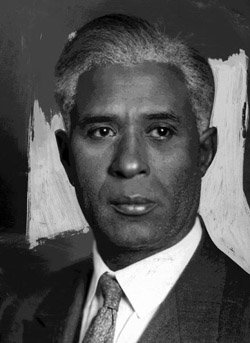
In Prince George's County, Maryland, the Prince George's County Board renamed Summerfield Boulevard to Garrett A. Morgan Boulevard in his honor. The adjacent Washington Metro's Morgan Boulevard Station was going to be named Summerfield, but was consequently renamed as well. Also named in his honor is the Garrett A. Morgan Cleveland School of Science in Cleveland, Ohio. In 2002, scholar Molefi Kete Asante included Morgan on his list of 100 Greatest African Americans.[22]
Morgan was a Prince Hall Freemason (Excelsior Lodge No. 11 of Cleveland, Ohio)[23] and an honorary member of Alpha Phi Alpha fraternity.
Morgan died on August 27, 1963, at the age of 86, and is buried at Lake View Cemetery in Cleveland, Ohio.
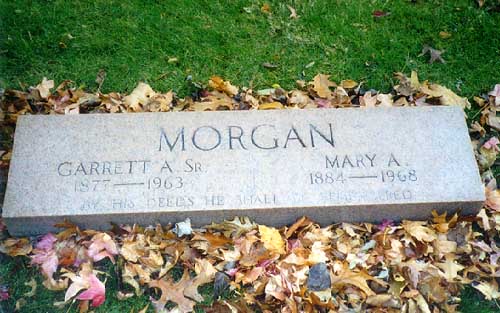

Awards and recognitions
At the Emancipation Centennial Celebration in Chicago, Illinois, in August 1963, Morgan was nationally recognized. Although in ill-health, and nearly blind, he continued to work on his inventions; one of his last was a self-extinguishing cigarette, which employed a small plastic pellet filled with water, placed just before the filter.

In Prince George's County, Maryland, the Prince George's County Board renamed Summerfield Boulevard to Garrett A. Morgan Boulevard in his honor. The adjacent Washington Metro's Morgan Boulevard Station was going to be named Summerfield, but was consequently renamed as well. Also named in his honor is the Garrett A. Morgan Cleveland School of Science in Cleveland, Ohio. In 2002, scholar Molefi Kete Asante included Morgan on his list of 100 Greatest African Americans.[22]
Morgan was a Prince Hall Freemason (Excelsior Lodge No. 11 of Cleveland, Ohio)[23] and an honorary member of Alpha Phi Alpha fraternity.
Morgan died on August 27, 1963, at the age of 86, and is buried at Lake View Cemetery in Cleveland, Ohio.

Taken from: http://www.history.com/this-day-in-history/garrett-morgan-patents-three-position-traffic-signal [20.11.2021]
References
- ^ "Encyclopedia of World Biography on Garrett A. Morgan". Bookrags.com. Retrieved 2009-05-19.
- ^ "The Encyclopedia of Cleveland History". The CLEVELAND CALL & POST. Case Western Reserve University. Retrieved 09/03/11.
- ^ a b c Who Made America? Pioneers: Garrett Augustus Morgan PBS.org.
- ^ Inventor of the Week: Garrett A. Morgan: The Safety Hood, MIT, February 1997.
- ^ Editors, Time-Life (1991). Inventive Genius. New York: Time-Life Books. p. 40. ISBN 0-8094-7699-1.
- ^ a b c d "An American Inventor, Federal Highway Administration". Fhwa.dot.gov. Retrieved 2009-05-19.
- ^ Asante, Molefi Kete (2002), 100 Greatest African Americans: A Biographical Encyclopedia. Amherst, New York: Prometheus Books. ISBN 1-57392-963-8.
- ^ Proceedings of the 129th Communication of the Most Worshipful Prince Hall Grand Lodge of Ohio F&AM. Columbus, Ohio: The Most Worshipful Prince Hall Grand Lodge of Ohio. 1978. pp. 70.

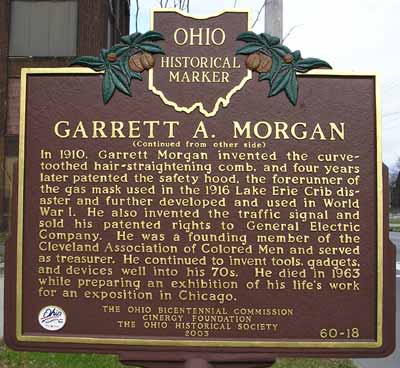
I really like this site.. I am a first time visitor an I can say that this post is really great. Very informative and I can really use this on my research on the topic titled "Inside the Internet World". Keep up the good work. thanks for sharing..
ReplyDeleteThis is very wonderful site.I love your post.Thank you so much provide your great site.I like it.Very great and interesting information.I appreciated this site.Your article is very impressive and helpful.Your blog is very knowledgeable.I am glad to visit this site.I really like it.Thanks for sharing this site.Thanks..
ReplyDelete